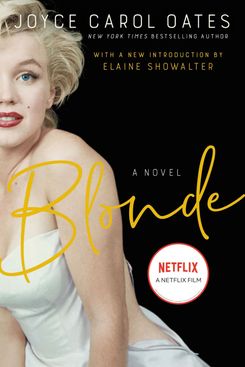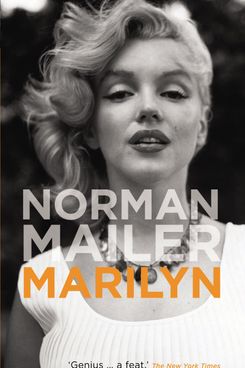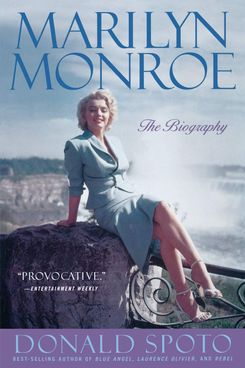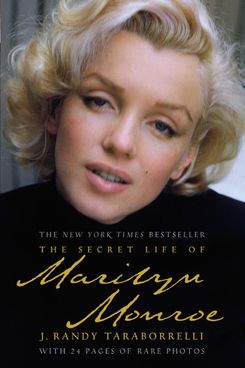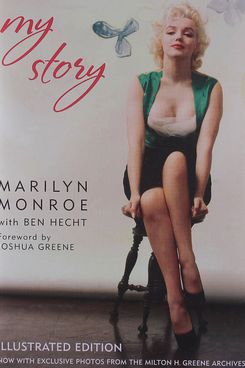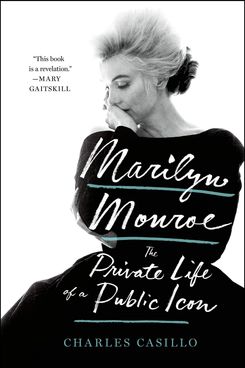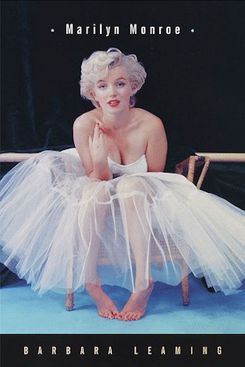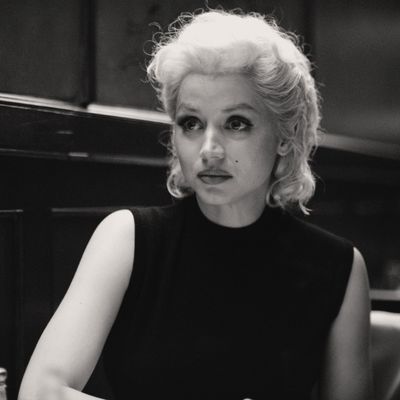
In life and in death, Marilyn Monroe merchandized sex, sensuality, and stardom. Even today, she represents a visual shorthand for our idea of the ultimate celebrity. Andy Warhol’s iconic silkscreens of Monroe perhaps best captured this: visual reminders of her marketable face, femininity, and eternal fame. Now a new Netflix film, Blonde, adapts the 2000 Joyce Carol Oates novelization of Monroe’s life story to give us an unvarnished depiction of the perils of her celebrity. The film joins countless other creative efforts to understand and anatomize the movie star born Norma Jeane Mortensen, including biopics, TV series, biographies, photo books, essays, and even plays. Some have had set agendas — like biographers claiming she was murdered by the FBI or had an affair with Robert F. Kennedy — while others have leaned into the emotional depths of her short, tragic life to sketch a portrait of someone whose fame completely eclipsed their humanity. For those looking to dig deeper, here are the best books that deconstruct, analyze, and even transmogrify the star known as Marilyn Monroe.
“The sole voice of Blonde is Norma Jeane’s,” says Oates of her lauded 2000 novel, Blonde. The book is a fictional exploration of Marilyn Monroe’s life that strips away the veneer of Hollywood moviemaking and leaves the unpolished Norma Jeane searching for security and certainty. At almost 1,000 pages, it’s an epic work that uses the rough storyboards of Monroe’s life to create a richly humanistic and relatable narrative. But be warned that it’s also a real sober read. In it, there is Monroe’s traumatic childhood, her many abortions, suicide attempts, alcoholism and drug problems, lovers and abusers, and precarious mental health. There’s also never-ending sweat in Blonde: the sweat in trying to be Marilyn Monroe, in searching for personal and professional autonomy, in simply needing to survive deep and gnawing traumas. The book aims to confront as Oates tasks us with reconciling this brutalized woman with the sanitized, glamorous femininity of star Marilyn Monroe. For those who enjoy the new film adaptation, it’s worth committing to Oates’s sustained novel on Monroe as it beautifully augments her tragedy, loneliness, and unending search for stability.
Norman Mailer’s 1973 coffee-table book on Monroe isn’t essential reading. But it’s an important cultural artifact in understanding how the star’s story was previously pitched to the masses. In the book, Mailer makes outrageous, unsubstantiated claims and mostly steals biographical sourcing from other bios. He pads out Monroe’s life to build a crescendo of claims, such as that the FBI allegedly murdered Monroe to suppress her affair with Robert F. Kennedy. This and other assertions proved bankable for Mailer in the 1970s, which saw the book sell millions. There’s other notoriety around Marilyn: A Biography, too, with some critics claiming it was an attempt by Mailer to clap back at Arthur Miller, as Mailer had ambitions for wider celebrity that Miller totally eclipsed in his marriage to Monroe. Rereading today, the book uses cheap, shorthand psychoanalysis to analyze the star and is punctuated with awkward sections that wax lyrical on her erotic appeal. It’s a relic of its time, but a key read for those wanting to reckon with how many Americans viewed Monroe from the 1970s onward — as a sex bomb, slut, and victim of an FBI cover-up. Mailer’s biography remains notable only in understanding the urgent work other biographers had to do to dispel his many sensationalist claims.
Donald Spato’s deeply researched and detailed biography of Monroe is a hard find today but worth the hunt. It’s often considered the best of the Monroe bios and remains an essential corrective. At almost 800 pages, it’s a fulsome account of Monroe’s much fabled life story, beginning with her difficult childhood — the absent, unknown father and mentally unwell mother — to her early days hustling in Hollywood, all right up until her huge celebrity finally engulfed her. The book is a fair and revisionist take that puts to bed many rumors, including completely debunking the sexual-affair stories with the Kennedy brothers (thanks Mailer). Spato states Monroe slept with J.F.K. only once: “The Kennedys had almost nothing to do with her.” This is all underpinned by comprehensive research, including 35,000 personal and professional documents (some unsealed for the first time), and rare interviews including with those present at the autopsy (who stress Monroe wasn’t murdered by the FBI or CIA). Instead, Spoto tries to let the straight facts talk alongside heavily attributable sourcing, arguing that Monroe’s tragic ends had everything to do with her search for stability in life and nothing to do with wild conspiracies.
While some Marilyn books have had political agendas, J. Randy Taraborrelli’s biography is invested more in her family ties and focuses on Monroe’s mother, Gladys Baker. We learn how generations of Monroe’s family were struck down by serious mental-health issues, including her mother, Gladys, who suffered paranoid schizophrenia and spent much of her life in institutions. Monroe was terrified of befalling the same hereditary line of madness that undid both her mother and her grandmother (who, incidentally, committed suicide). Taraborrelli’s approach is to stress the “secret life” of Monroe and argue that her psychic issues were owed to this unavoidable hereditary destiny. Much of mental illness was misunderstood in the 1950s and, in Monroe’s case, poorly treated by the exploitative studio system and a sycophantic crew close to her. Monroe’s concerns about her mental stability only increased her dependency on prescription pills and alcohol to calm her immense angst later on. (It’s somber reading to learn she died with 15 bottles of prescription pills on her nightstand.) Know that this biography is a more gossipy take than others, so don’t look for much thoughtful commentary and expect more exposé (like interviews with Secret Service agents and copies of Gladys Baker’s medical records).
Believe it or not, Monroe actually authored parts of her own autobiography while still alive. My Story (first published in 1974) is an anomaly, however, as it was largely forgotten about and only published in response to the renewed interest in her in the mid-1970s (thanks again, Mailer). The book pieces together several interviews done with screenwriter Ben Hecht, chronicling her life up until 1954. Some startling insights are shared here, including that Monroe was sexually abused at 8 years old by a man who boarded with her foster parents. (There’s also a wild story of being scolded by Joan Crawford for her outfits.) Monroe presciently says in My Story, “Yes, there was something special about me … I was the kind of girl they found dead in a hall bedroom with an empty bottle of sleeping pills in her hand.” Know that this isn’t a full picture — more like a small window into Monroe’s mind. Piecing together personal thoughts, anecdotes, and memories, the book asks fans to fill in the blanks on Monroe’s brief life by listening to her own voice and reflections rather than subscribing to the outrageous myths projected onto her.
While Monroe biographies are often pumped out every few years, Charles Casillo’s mediation on Monroe is one of her more redemptive treatments in recent memory. Unlike others that have sought total and dispassionate accuracy, or speculated on wild conspiracy theories, Casillo leans into human backstories for a more sensitive portrait that mines the emotional contours of her life. In particular, how Monroe was plagued by gnawing insecurities — on her mental stability, her broken family ties, her own self-preservation — and undone by dependencies to keep seemingly alive and working, using everything from booze to barbiturates. The book’s central claim is that Monroe’s fractured and unfulfilled relationship with her unknown father was what caused a lifetime of problematic relationships and trauma with men. This included her husbands, the demanding Joe DiMaggio and the belittling Arthur Miller. Monroe’s search for her father is emblematic of her larger search for certainty elsewhere in her life that sadly never goes fulfilled, ultimately seeing her take her own life — whether intentionally or accidentally. This is a fresh biography that synthesizes many parts of her life story into a digestible and compelling psychological study.
Barbara Leaming takes great pains to devalue the usual scandalous parts of Monroe’s life (such as the Kennedys and her suicide) to invest heavily into a study of her identity as a woman struggling against the studio system, society, and herself. At the center of this strife is her marriage to Arthur Miller. Leaming argues this union remains representative of Monroe’s desire for dignity and artistic respect, away from the emptiness of Hollywood’s exploits and the façade of Marilyn the dumb blonde. Somewhat pessimistically, however, Leaming says that Monroe ultimately succumbed to the same cycle she sought out to avoid, even in spite of the marriage. She spent her later years posing for nude photos and hitting the booze and party circuit, drifting back to the demeaning routines she so desperately sought to escape by becoming a big movie star in the first place. Of all the biographies out there, this is sure to appeal to readers interested in reckoning with the relationship between Monroe’s celebrity and womanhood, as Leaming provides important correctives to many mainstream tall tales. Marilyn Monroe restores the maligned womanhood, intellect, and depth to Monroe that still today features in popular understandings of her as a symbolic shorthand for sex and celebrity.
